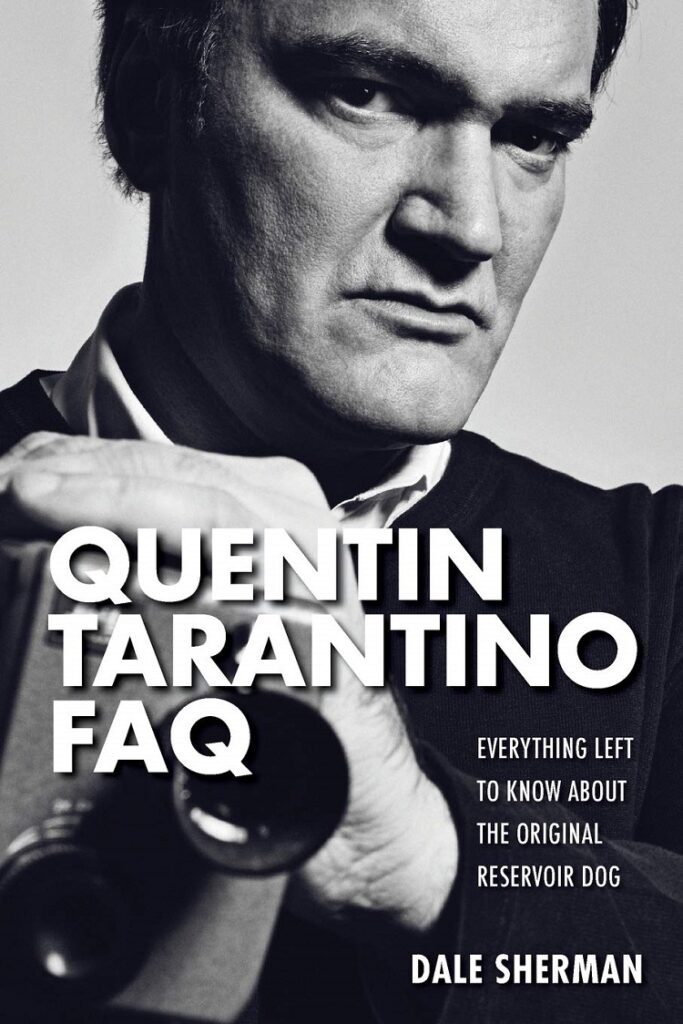
Written by Mary K. Williams
Author Dale Sherman’s newest FAQ book, he previously wrote Armageddon Films FAQ and KISS FAQ, was published this month, and it’s a work dense with trivia, factoids, and much more. But does it answer the big question? (At least my big question?) What is Tarantino’s fascination with an out-of-sequence narrative?
We will get to that.
Sherman’s writing comes off as a bit awkward at times, but mostly it’s fine, although quite familiar, as the book was intended to be a series of blog posts. But the overall voice throughout the work has the feel of someone who is jazzed to the max to share this information: the history and deep background of Tarantino’s films, and it works well enough.
Whether by design or mistake, the content layout interestingly tells Tarantino’s story in a non-sequential order. The first chapter follows his life in chronological order, and for the most part, leads right into his first big film in Chapter 4, Reservoir Dogs. But the book does not just list his movies filmography style, it examines each one in depth, and often out of order of the actual release date. And mixed in with the chapters covering his movies, are other side trips.
One such detour is Chapter 19: A Place for your Samurai Sword. This explores the intertwining of many of QT’s characters, locales, and plot lines across his movie universes. Some of these lines of reasoning are taken from Tarantino himself, such as the idea that John Travolta’s Vincent Vega in Pulp Fiction, would have been the brother of Vic Vega, Mr. Blonde, from Reservoir Dogs. And Sherman also explains fanboy theories of other curious crossovers and “six degrees of separation” that connects Tarantino’s work like a textual Venn diagram. It takes reading through these theories more than once to get a sense of things. It’s a fun bit of confusion.
Other chapters discuss his use of music, recurring film angles, techniques, tropes, and dialogue, “That’s one reason why he has been so specific about his dialogue in films since the early days of his career, as he found that he needed to guide actors through his meaning…” (p 281). And yes, Sherman covered the time-shift question in Chapter 15: Locks, Saints, and Smoking Aces.
One flaw for this reviewer was the awkward typeset. It was too small and closely spaced. It’s somewhat understandable, the book comes in at over 350 pages, and a larger print would make the work even bigger, but still, it has a bit of a squeezed look to it.
It must be noted that the title is a bit incorrect – which is a good thing. Thankfully, the Quentin Tarantino FAQ is not your regular list of questions and answers. There are probably a lot more answers to questions you never knew you wanted to ask, but were glad to have.